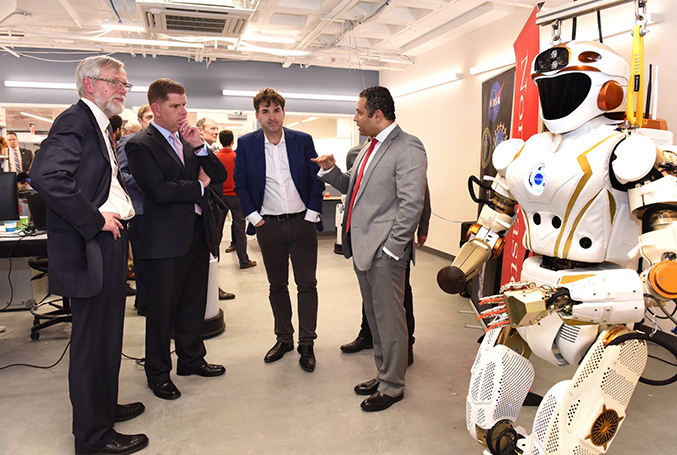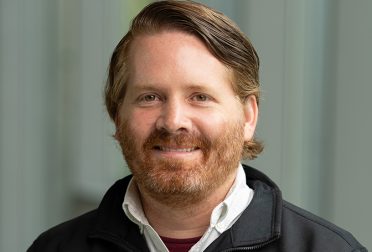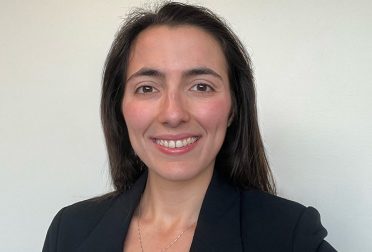Fady Saad
SDM ‘11
B.S. Mechanical Engineering; Industrial Engineering and Design
A native of Egypt, Fady had spent the first 8 years of his career working for Siemens and Nokia in Europe and North Africa deploying large-scale telecommunication networks. He was ready to transition out of corporate life and was excited by the field of complex systems as he pursued his interest in building and scaling companies.
After graduating from SDM, Fady co-founded MassRobotics, the largest robotics commercialization hub in the United States.
How did the SDM program change your job trajectory?
For me, it’s hard to separate SDM, MIT, and Boston – they are such integrated experiences and I’m forever grateful for the opportunities. It’s hard to pinpoint which one did what. I thought I would get my master’s degree and consult, join a boutique consulting company and advise medium size companies. But I had my own intellectual questions I was looking for answers about from the program.
Two years later, I’m not doing consulting, I’m not doing corporate work, I’m not doing any of that. I’m focused on entrepreneurship, innovation, and startups. Because of MIT and the amazing energy there, and the kind of exposure you get at SDM and the flexibility the program offers you, you can do whatever you want. You don’t have a fixed career path the way you would with an MBA. In my case, I was blessed that it led me to startups and more specifically to building organizations that support startups.
What is a key thing you learned at SDM that you routinely use in your work today?
A key problem we were trying to solve at MassRobotics is how you can help robotics companies move from a prototyping stage to a finished product. This is a unique chasm that software companies don’t have. Based on my coursework at SDM and my thesis work on system dynamics, I worked to develop a stakeholder map and establish the value exchange between those stakeholders. You need to have many different parties involved: investors, corporate, universities, the government (as a regulator and policymaker), testing sites, and other innovation entities.
Our organization is built on three pillars: a shared physical infrastructure, a strategic infrastructure, and an ecosystem infrastructure. I coined the term “startup escalator” – different from startup incubators and accelerators who serve as the pipeline for us. As an “escalator”, we come a little bit later in the process and we basically scale those companies beyond the prototype.
What’s a special project or moment you remember from your time at MIT?
It’s an overwhelming experience, a lifetime experience that I feel very fortunate and blessed to go through. Sitting in classes, you’re basically listening to the professors who wrote the textbook and are the authorities on these subjects. It’s hard to summarize it.
They say going to MIT is like drinking from a firehose and it’s true. The only constraint one has during their time at MIT a limit of time and energy to take it all in, how much you can absorb from this amazing ecosystem. When you walk onto the MIT campus there is an energy I haven’t seen anywhere else. Sometimes when I’m down and need a boost, I go to Kendall Square and have a coffee, and just looking at the students, professors, and entrepreneurs ignites my energy.




